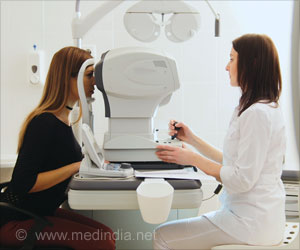“Although it is a respiratory disease, COPD also affects other systems of the body,” commented Laura Delgado, predoctoral researcher at ISGlobal. “Its effect on the cardiovascular and muscular system has been extensively studied, but its effect on the autonomic nervous system has received less attention.” With Delgado as lead author, the researchers set out to study this effect.
The study assessed participants’ ability to increase their heart rate during exercise (chronotropic response, CR) and return to baseline values afterwards (heart rate recovery, HRR). The faster the heart responds, the better its autonomic function.
“In the case of reduced CR, our findings were consistent with the literature, although we measured it during a sub-optimal test that did not require maximal effort from the patients,” explained Delgado. “In the case of HRR, we monitored patients’ recovery for five minutes after the walk test and saw that their heart rate did not return to baseline.”
The second aim of the study was to look at how autonomic function related to physical activity in people with COPD. “Here we observed six different physical activity parameters and tried to associate them with CR and HHR,” Delgado continued. “In the end, we found a relationship between vigorousthat is, higher intensityphysical activity and autonomic function that persisted even after adjusting for confounding variables.”
“We need to learn more about the systemic effects of COPD and its relationship with other features of the disease, such as physical activity, in order to be able to recommend improvements to disease management,” commented Delgado.
The new study aimed to provide a detailed characterization of the parameters of cardiac autonomic response to exercise that could be used in the design of pulmonary rehabilitation programmes and physical activity interventions for patients with COPD.
In contrast to previous studies, which have focused on severe or hospitalized patients, this study also included patients with mild COPD. The analysis included 320 patients with mild to very severe COPD recruited from primary care centers and tertiary hospitals in five coastal towns in Catalonia. Eighty-two percent of the patients were men and the mean age was 68 years. Nearly 60% had a diagnosis of cardiovascular disease.
Another novel feature is that the researchers eschewed the usual means of assessing cardiac autonomic dysfunctionheart rate (measured by electrocardiogram) and baroreceptor sensitivityand instead used two simple, low-cost parameters: CR during exercise and HRR afterwards. To measure autonomic function, participants underwent a six-minute walk test. CR was calculated by measuring heart rate during the walk test (in response to exertion) and HRR was calculated by measuring heart rate during a five-minute recovery period after the walk test.
In addition, the participants’ physical activitysteps, time spent in any/moderate/vigorous activity, intensity of activity, and sedentary timewas measured objectively using an accelerometer over a one-week period.
The association between physical activity parametersas measured by accelerometerand CR and HRR was estimated using multivariable linear regression models.
The study found that an increase in time spent in vigorous physical activity was significantly associated with a fast decrease in HRR (p = 0.044) and an increase in CR (p = 0.021). No independent association was found for other physical activity parameters.
“At all levels of disease severity, people with COPD have cardiac autonomic dysfunction, which is inversely related to the practice of vigorous physical activity,” concluded Judith García-Aymerich, head of the Non-Communicable Diseases and Environment Programme at ISGlobal. “This means that, under the supervision of health care professionals, people with COPD could benefit from performing vigorous physical activity as part of pulmonary rehabilitation programmes and physical activity interventions, although more research is needed to analyze the pros and cons.”
Source: Eurekalert



